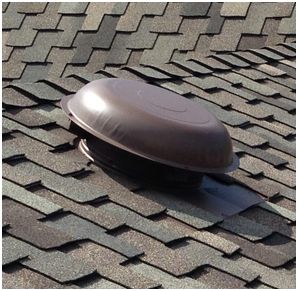All of this began from a client conversation with one of the Hansen Pole Buildings’ Designers….
Back in the stone ages I ruled the prefabricated metal connector plated wood truss manufacturing plant at the long ago defunct Lucas Plywood and Lumber in Salem, Oregon. Back in the late 70’s this was a going and growing concern. Our client base was primarily professional building contractors and among our services and products were lumber, trusses, interior and exterior pre-hung doors, cabinets, insulation and roofing.
One of my cohorts in crime, Mike Oglevie, really took to the roofing business and at the time he was buying and reselling roofing and roofing products by the semi-truck load.
Part of “the package” was what we referred to at the time as “roof jack vents”. These were/are more technically known as roof louver exhaust vents.
From one of many manufacturers, “…. the Roof Louver is an excellent roof vent for ventilating attic spaces on steep slope roof applications. The Roof Louver will add necessary roof top ventilation to alleviate moisture from the attic in the winter and heat in the summer. The roof louver will extend the life of the roof and overall building structure. The Roof Louver is made of heavy gauge aluminum that will not rust and The Roof Louver has been pressure tested to wind speeds of 200 mph by the standards of Texas Insurance.
The Roof Louver has a round concentric covered lid with louvers towards the bottom. Also the Roof Louver comes standard with a 1 inch collar (neck) adds height above the square flange (base) to allow space for roof shingles. All Roof Louver models have inner vertical louvers to keep out birds, insects and animals. Additionally, the louver design is shown to be better than insect screen which will clog up in time. Insect screen can reduce air flow by 50% to 60% percent while the Roof Louver louvers allow for 100% airflow. “
shown to be better than insect screen which will clog up in time. Insect screen can reduce air flow by 50% to 60% percent while the Roof Louver louvers allow for 100% airflow. “
Of course roof louver exhaust vent manufacturers want to sell their products. Here is a claim from one off them: “Remember, hot air rises. It will not go down to escape through the opening of Ridge Vents and other non-motorized ventilators. Ridge Vents and Slant Backs, for example, trap radiant heat by their design. This flaw is due to the fact that they have the exhaust at a low elevation point on the vent itself.”
In my humble opinion, their marketing department has missed one of the crucial points of roof louver exhaust vents – the do not mount to the roof at the peak. Start looking around at shingled roofs, especially ones over ten years old. Many of them have these square metal vents, usually installed on the non-street side of the roof about 2/3 to ¾ of the way between the roof eave and the ridge.
The marketer missed his or her own, “Remember, hot air rises” – yes it does, right past the vent and to the highest place on the roof – the ridge.
I do know, from experience, a properly sized vented eave combined in a system with an adequate vented ridge does indeed work to provide the necessary ventilation with the pluses of not being unsightly and not having to try to seal around the base in the field of the roof to prevent leakage.
Oh – and the closable version, while it probably exists, I have yet to find it.






